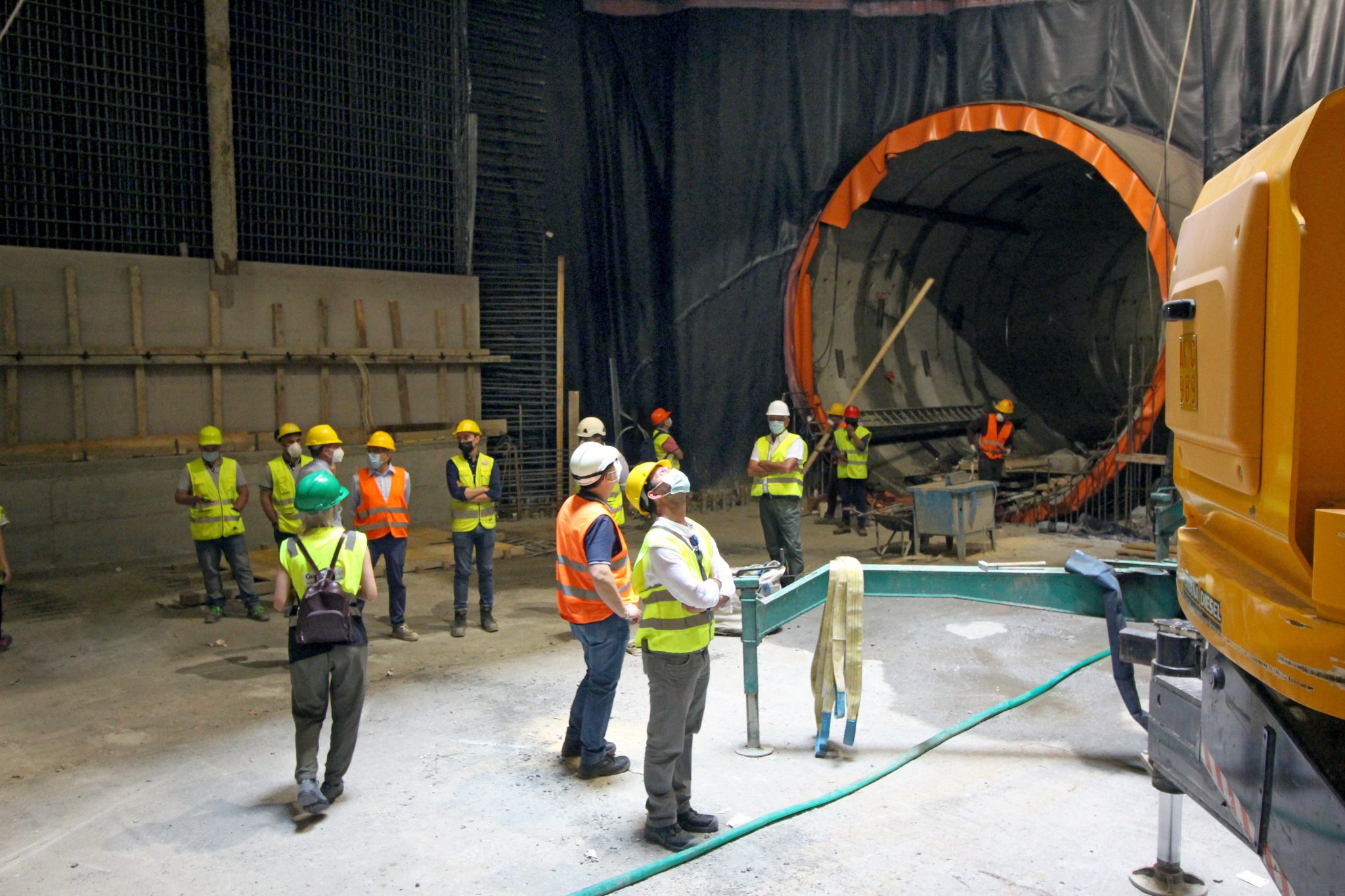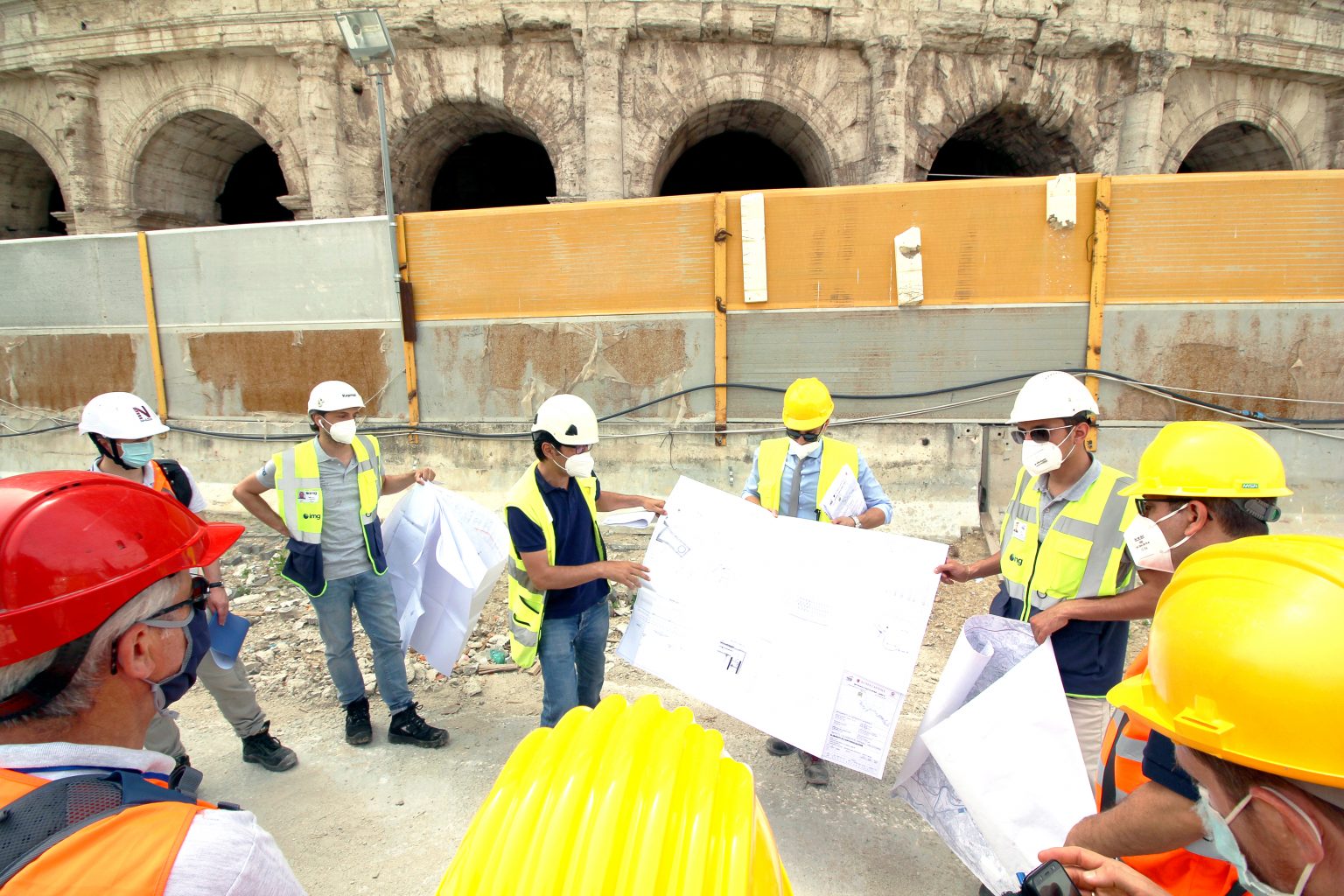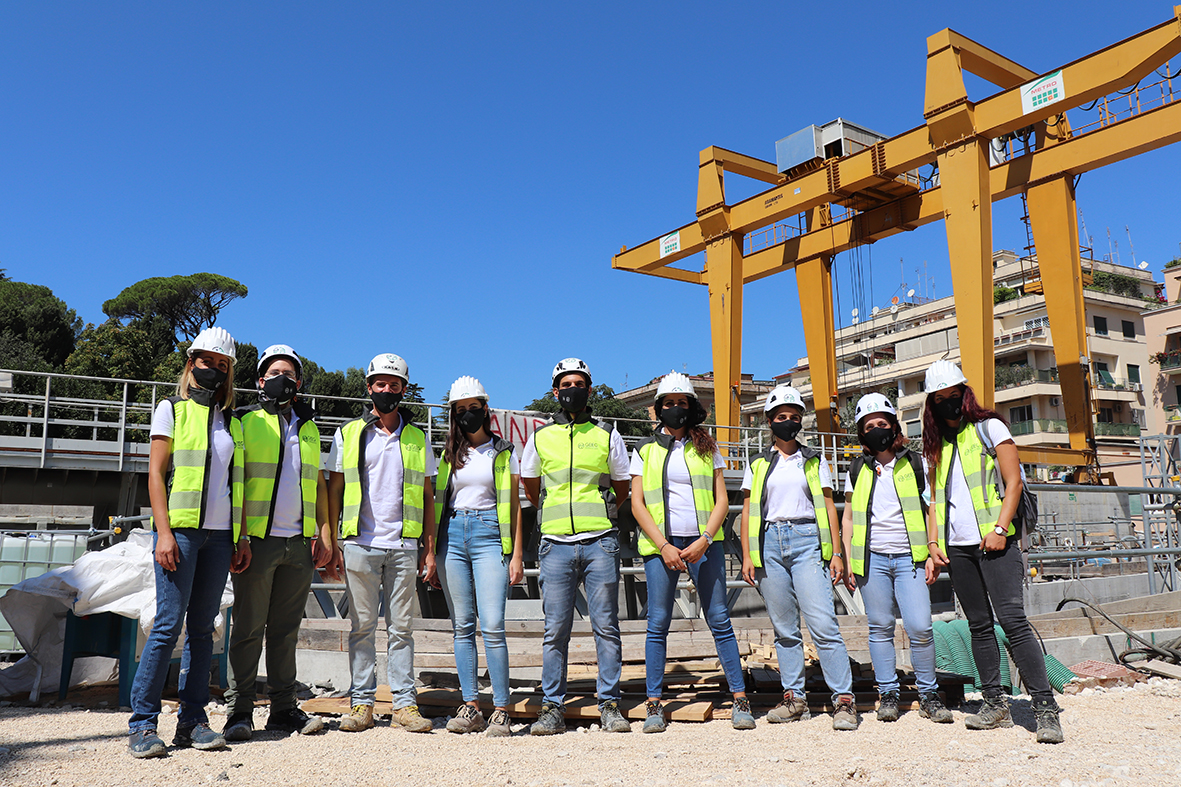In the area related to the Venice Station, the first-phase investigations have revealed a complex and multifaceted situation, both in the central Piazza Venezia area and, especially, in the Piazza Madonna di Loreto area. The investigations have been conducted in multiple phases, allowing for the nearly complete exploration of a significant multi-layered urban sector, ranging from Republican-era levels to the modern era. In particular, the excavations have brought to light a public building characterized by a rectangular hall with two staircases inside. This complex was used for cultural activities and is known as the “Ateneo of Hadrian.”
The archaeological investigations, carried out from 2008 to 2013, concluded with the request from the Superintendency to enhance the ancient structures discovered within the future Venice Station. Following renewed interest expressed by the Capitolina Administration and the Funding Entities regarding the construction of the functional section from Fori Imperiali to Venice, a campaign of environmental, structural, archaeological, and geognostic surveys was initiated in December 2019. These surveys are essential for the design of the new Venice Station.
The request for additional archaeological investigations by the Superintendency arises from the desire to create an “archaeological station” with an underground museum route connecting Palazzo Venezia, the Vittoriano, the Trajan’s Forum, and enhancing the structures discovered during the excavations within the station complex. The additional investigations planned include:
- Assessment of the structural and conservation status of monumental buildings such as the Vittoriano, Palazzo delle Assicurazioni Generali, Palazzo Venezia, the Church of S. Maria di Loreto, the Church of S. Marco, the Basilica Ulpia, and the Auditoria of Hadrian. This will involve the preparation of Testimonials of Structural Condition and the identification of safeguarding interventions for any structural issues identified.
- Topographic monitoring of the same monuments.
- Archaeological investigations in the subsoil of the Piazza Venezia, Piazza Madonna di Loreto, and via dei Fori Imperiali areas adjacent to them (approximately 80 core recovery boreholes reaching a depth of approximately 15-20 meters – in layers not affected by past human activities);
- Investigations aimed at assessing the quality of the main atmospheric and environmental elements (air, groundwater, noise levels, and vibrations) in the area;
- Geognostic investigations aimed at characterizing the geomechanical behavior of the various lithologies constituting the subsoil and predicting their response to possible construction methods, primarily consisting of:

- A deep drilling campaign (approximately 85 meters from the ground level) aimed at conducting geotechnical tests and installing instrumentation;
- A series of test fields designed to determine the efficiency of various soil treatment methods, such as chemical/cement injections and freezing.
The main purpose of this extensive monitoring system has been to verify the deformation response of the monuments during the construction of the project, ensuring control over the work and comparing the acquired data with the results obtained from the design phase modeling. Additionally, when deemed necessary due to the conservation status or potential effects related to the construction of the line, geotechnical and structural protection measures have been implemented for the monuments.
The protective measures can be essentially categorized into two types:
- Provisional or definitive measures implemented before the start of excavation activities: These are structural consolidation interventions aimed at addressing pre-existing issues or significant deterioration, not directly related to the effects induced by the construction of Line C;
- Measures implemented during excavation to counteract induced settlements in real-time, containing them below predetermined thresholds: These are geotechnical measures, such as Compensation Grouting.
In order to minimize their impact as much as possible on an area like Piazza Venezia, characterized by heavy vehicular traffic, tourist flows, and institutional activities, it was deemed appropriate to:
- Immediately establish a synergistic collaboration with the Superintendencies responsible for the protection and management of various monuments to be investigated, as well as the preservation of the underground. This collaboration allowed for the implementation, with the support of leading Technical Studies and specialized companies in archaeological investigations and conservation, of a rigorous plan for studying the structural and conservation status of buildings, as well as archaeological coring in the subsurface;
- Immediately establish a synergistic collaboration with the Superintendencies responsible for the protection and management of various monuments to be investigated, as well as the preservation of the underground. This collaboration allowed for the implementation, with the support of leading Technical Studies and specialized companies in archaeological investigations and conservation, of a rigorous plan for studying the structural and conservation status of buildings, as well as archaeological coring in the subsurface;
- Immediately deploy 6 drilling rigs, each with its own work teams, in “mobile” construction sites with “slender” enclosures, allowing for their immediate removal once the specific investigation was completed;
- Establish a more stable construction site in the southern portion of the central garden of Piazza Venezia, where freezing and treatment tests through chemical/cement injections of the soils were conducted. This was necessary because these tests, by their nature, required a longer execution time and larger equipment and facilities.

Freezing and Soil Treatment Test Fields
The artificial soil freezing method is a contemporary technique for waterproofing and/or consolidation during subsoil excavation. It involves freezing water within a volume of soil by circulating a low-temperature liquid, which removes and dissipates heat outside. The freezing technique is the most suitable choice, especially in urban environments, to ensure the highest possible level of safety, both for the workers involved and for the existing structures on the surface. The project includes the installation of 21 vertical freezing probes with a length of approximately 65 meters each, and 12 thermometric probes to verify the achievement of the ice thicknesses as designed.


